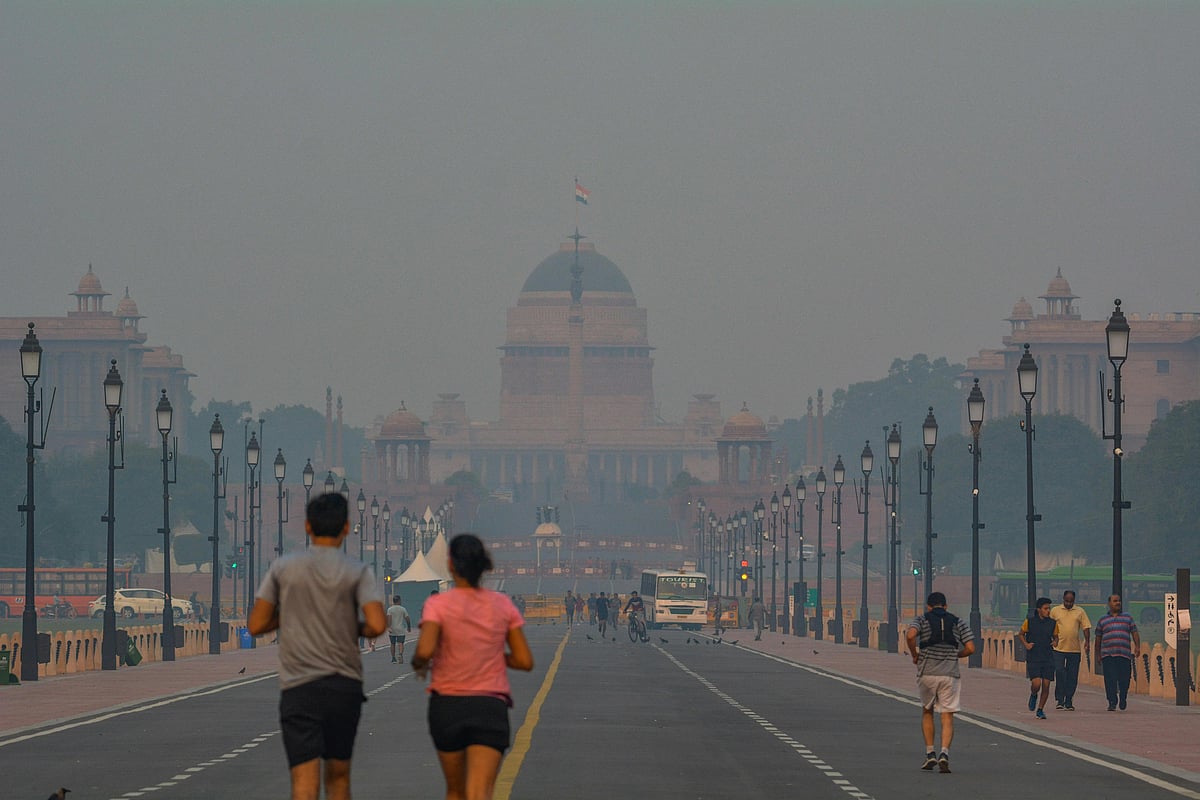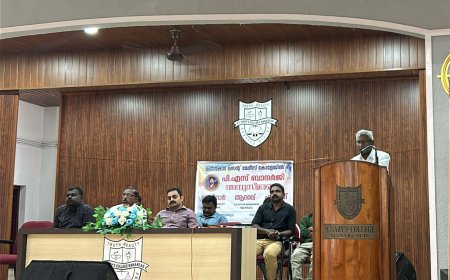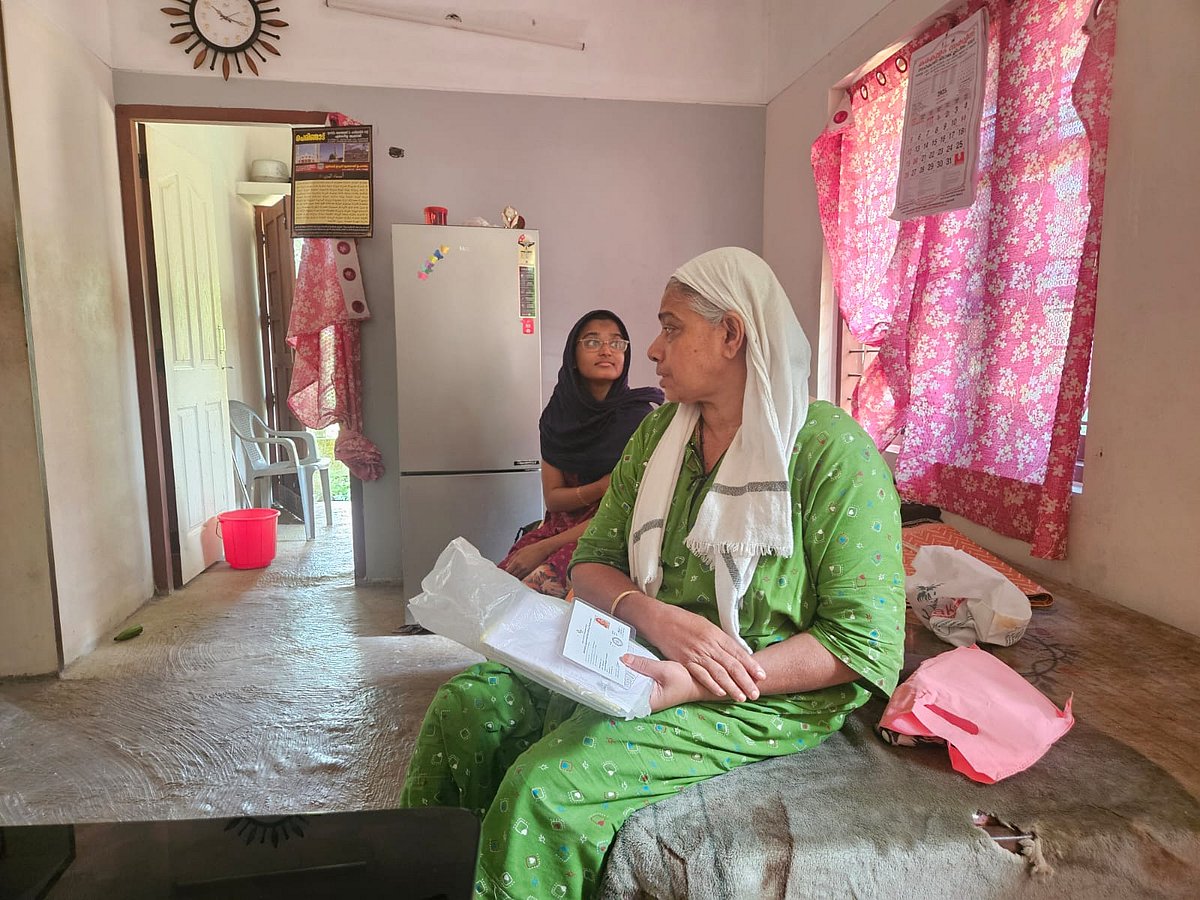Air pollution killed 1.7 million Indians in 2022, says Lancet report
Follow TNM's WhatsApp channel for news updates and story links.More than 1.7 million people died in India in 2022 due to exposure to PM2.5, a dangerous fine particle pollutant, according to The Lancet Countdown on Health and Climate Change. The report, released on October 29, 2025, said, “there were over 1,718,000 deaths attributable to anthropogenic air pollution (PM2.5) in 2022 in India, an increase of 38% since 2010.” Fossil fuels such as coal and liquid gas were responsible for 7,52,000 deaths, accounting for 44% of the total. Of these, coal alone caused 3,94,000 deaths, mostly from its use in power plants (2,98,000 deaths). The use of petrol in road transport added another 2,69,000 deaths. Petrol-powered vehicles release tiny particles (PM2.5) and toxic gases like nitrogen oxides and carbon monoxide when fuel burns. The report also said that, in 2022, the economic loss from premature deaths caused by outdoor air pollution was US$339.4 billion, equivalent to 9.5% of India’s GDP. Extreme heat is emerging as one of the most pressing health threats. The study found that, compared with 1990–99, people in 2024 were exposed on average to 366 more hours of heat at moderate or higher risk of heat stress, marking a record high. This means people working or spending time outdoors now face dangerously long periods of unsafe temperatures. Indoor pollution continues to be a major killer too. The use of polluting fuels inside homes led to 113 deaths per 1,00,000 people. The impact was worse in rural areas, with 125 deaths per 1,00,000, compared with 99 per 1,00,000 in cities. India is among the countries most severely affected by the growing health impacts of climate change, according to The Lancet Countdown on Health and Climate Change. The report notes that “China and India are the countries with the highest number of affected individuals in both age categories — individuals over 65, over 75, and infants under one year old — primarily due to their large populations.” The health effects of wildfires are also rising sharply. “In four years from 2020 to 2024, wildfire smoke (PM 2.5) alone was accountable for an annual average of 10,200 deaths in India, up by 28% from 2003 to 2012,” the report says. The report highlights how changes in India’s food and agriculture systems could bring major health benefits, noting that “in 2022, red meat and dairy accounted for 65% of all agricultural production-related emissions in India.” Overall agricultural emissions rose by 13% between 2000 and 2022, driven by production and land-use changes. Agricultural emissions are the greenhouse gases released during farming activities, such as raising livestock, growing crops, using fertilisers, and clearing land for agriculture. These gases — mainly methane, nitrous oxide, and carbon dioxide — contribute to global warming and air pollution. Between 2001 and 2023, the country lost a cumulative 2.33 million hectares of tree cover, with 1,43,000 hectares lost in 2023 alone, mainly due to forestry activities. The report says urban India, too, faces challenges from shrinking green spaces. Of the 189 most populous cities (with populations over 5,00,000), 14 had exceptionally low levels of urban greenness, 110 had very low levels, 42 had low levels, and only 22 had moderate levels. Remarkably, only Tamluk was classified as having a high level of urban greenness. Overall, urban greenness in India has decreased by 3.6% from 2015 to 2024, raising concerns about livability and heat resilience in cities. The study also noted that public and scientific engagement on climate and health issues is growing but remains limited. In 2024, Indian newspapers published 296 articles linking climate change and health, a 19% increase since 2023, yet such coverage made up only 15.3% of all climate-related news. Among scientific studies assessed, 208 papers (75%) focused on the health impacts of climate change, while only one paper (0.4%) studied effects on indigenous communities, showing a critical gap in research and representation.

Follow TNM's WhatsApp channel for news updates and story links.
MORE than 1.7 million people died in India in 2022 due to exposure to PM2.5, a dangerous fine particle pollutant, according to The Lancet Countdown on Health and Climate Change.
The report, released on October 29, 2025, said, “There were over 1,718,000 deaths attributable to anthropogenic air pollution (PM2.5) in 2022 in India, an increase of 38% since 2010.”
Fossil fuels such as coal and liquid gas were responsible for 7,52,000 deaths, accounting for 44% of the total. Of these, coal alone caused 3,94,000 deaths, mostly from its use in power plants (2,98,000 deaths). The use of petrol in road transport added another 2,69,000 deaths. Petrol-powered vehicles release tiny particles (PM2.5) and toxic gases like nitrogen oxides and carbon monoxide when fuel burns.
The report also said that, in 2022, the economic loss from premature deaths caused by outdoor air pollution was US$339.4 billion, equivalent to 9.5% of India’s GDP.
Extreme heat is emerging as one of the most pressing health threats. The study found that, compared with 1990–99, people in 2024 were exposed on average to 366 more hours of heat at moderate or higher risk of heat stress, marking a record high. This means people working or spending time outdoors now face dangerously long periods of unsafe temperatures.
Indoor pollution continues to be a major killer too. The use of polluting fuels inside homes led to 113 deaths per 1,00,000 people. The impact was worse in rural areas, with 125 deaths per 1,00,000, compared with 99 per 1,00,000 in cities.
India is among the countries most severely affected by the growing health impacts of climate change, according to The Lancet Countdown on Health and Climate Change. The report notes that “China and India are the countries with the highest number of affected individuals in both age categories — individuals over 65, over 75, and infants under one year old — primarily due to their large populations.”
The health effects of wildfires are also rising sharply. “In four years from 2020 to 2024, wildfire smoke (PM 2.5) alone was accountable for an annual average of 10,200 deaths in India, up by 28% from 2003 to 2012,” the report says.
The report highlights how changes in India’s food and agriculture systems could bring major health benefits, noting that “in 2022, red meat and dairy accounted for 65% of all agricultural production-related emissions in India.” Overall agricultural emissions rose by 13% between 2000 and 2022, driven by production and land-use changes.
Agricultural emissions are the greenhouse gases released during farming activities, such as raising livestock, growing crops, using fertilisers, and clearing land for agriculture. These gases — mainly methane, nitrous oxide, and carbon dioxide — contribute to global warming and air pollution.
Between 2001 and 2023, the country lost a cumulative 2.33 million hectares of tree cover, with 1,43,000 hectares lost in 2023 alone, mainly due to forestry activities.
The report says urban India, too, faces challenges from shrinking green spaces. Of the 189 most populous cities (with populations over 5,00,000), 14 had exceptionally low levels of urban greenness, 110 had very low levels, 42 had low levels, and only 22 had moderate levels. Remarkably, only Tamluk was classified as having a high level of urban greenness.
Overall, urban greenness in India has decreased by 3.6% from 2015 to 2024, raising concerns about livability and heat resilience in cities.
The study also noted that public and scientific engagement on climate and health issues is growing but remains limited. In 2024, Indian newspapers published 296 articles linking climate change and health, a 19% increase since 2023, yet such coverage made up only 15.3% of all climate-related news.
Among scientific studies assessed, 208 papers (75%) focused on the health impacts of climate change, while only one paper (0.4%) studied effects on indigenous communities, showing a critical gap in research and representation.




















































































